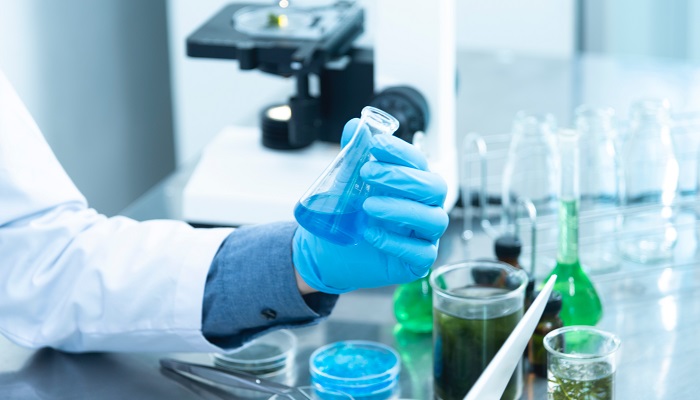The term ‘stem cells’ is fast becoming a buzzword in the realms of medical science and health-conscious communities worldwide. The promises held by these unique cells in revolutionizing medical treatments have led to a surge in research and therapeutic applications. Stem cells are at the forefront of a new wave in regenerative medicine, aimed at repairing, rejuvenating, and replacing damaged tissues in the body.┬Ā
But what exactly are stem cells, and how are they changing the face of medicine?
1. Introduction To Stem Cells And Stem Cell Therapy
Stem cells are the body’s raw materials ŌĆö cells from which all other cells with specialized functions are generated. They are unique in that they have the potential to develop into numerous different types of cells during early life and growth.┬Ā
Additionally, in many tissues, they function as an internal repair mechanism, dividing without limit to replenish damaged or worn-out cells.
One of the most exciting applications of these cells is stem cell therapy. Essentially, this therapy uses stem cells to replace or repair damaged cells, tissues, or organs. It holds the potential to treat a variety of conditions, ranging from spinal cord injuries to heart disease, and even neurological disorders. With stem cell therapy, there’s a renewed hope for patients worldwide.
2. Sources Of Stem Cells
Stem cells can be derived from multiple sources:
- Embryonic Stem Cells: These are derived from embryos. They are pluripotent, which means they can give rise to every cell type in the fully formed body, but not the placenta and umbilical cord.
- Adult Stem Cells: These are found in small quantities in most adult tissues, such as bone marrow or fat. While their primary role is to maintain and repair the tissue in which they are found, they have a limited ability to transform into other cell types.
- Induced Pluripotent Stem Cells (iPSCs): Scientists can now reprogram adult cells to become pluripotent. This innovation sidesteps the ethical concerns surrounding embryonic stem cell research.
3. Stem Cells In Tissue Repair
When injury or disease damages certain tissues in the body, stem cells present in those tissues can initiate the repair process. They divide and differentiate into the required cell type, replacing the lost cells.┬Ā
For instance, in the skin, stem cells help in replacing dead skin cells, while in the bone marrow, they produce new blood cells continuously.
4. Stem Cells And The Brain
While traditionally it was believed that the brain, once damaged, couldn’t regenerate, recent research suggests otherwise.┬Ā
Neural stem cells, which can differentiate into neurons and other supporting cells, offer potential therapies for conditions like Parkinson’s disease, Alzheimer’s, and even spinal cord injuries. Through strategic transplantation, these cells can help in restoring function in impaired regions of the brain.
5. Challenges In Stem Cell Therapy
Despite the potential, stem cell therapy isn’t without challenges. There are concerns about:
- Tumor Development: Some stem cell treatments, particularly those using embryonic stem cells, have shown a tendency to form tumors.
- Rejection: If the stem cells are not from the patient’s body, the immune system might reject them.
- Ethical Concerns: Using embryonic stem cells for research purposes is a topic of debate due to the destruction of embryos involved.
6. The Future Of Regenerative Medicine With Stem Cells
The future looks promising with advancements like organ printing and personalized medicine. Imagine a scenario where damaged organs are replaced with 3D printed ones using a patient’s stem cells. This would eliminate the risk of rejection and the waiting time for donor organs.┬Ā
Moreover, with personalized medicine, treatments can be tailored to individual genetic makeups, ensuring higher effectiveness and fewer side effects.
7. Success Stories
Across the globe, there have been numerous instances where stem cell treatments have shown remarkable results:
- Heart Disease: Scientists have been able to regenerate heart tissues using stem cells, potentially reversing damage from heart attacks.
- Spinal Cord Injuries: There have been cases where patients regained partial function after stem cell treatments.
- Eye Diseases: Stem cells have been used to treat conditions like macular degeneration, restoring vision to patients.
Conclusion
Stem cells, often termed the ‘building blocks of life,’ have ushered in a new era in regenerative medicine. Their potential applications, from treating degenerative diseases to regenerating damaged tissues, hold immense promise for a future where the line between impossible and possible medical treatments becomes increasingly blurred.┬Ā
As with any groundbreaking innovation, challenges and concerns persist. Yet, as research progresses and we inch closer to harnessing the full potential of stem cells, we might be on the cusp of a medical revolution, changing the way we understand healing and body rejuvenation.


















